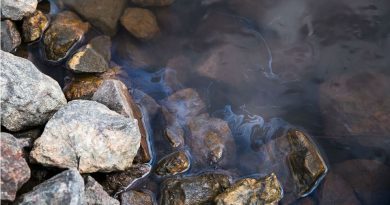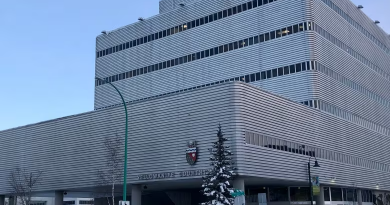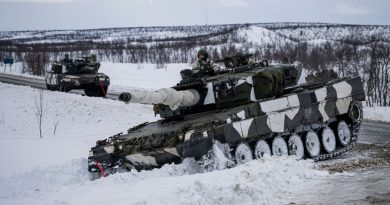Sweden says before NATO summit they will spend 5% of GDP on defence

Less than two weeks before a NATO summit, Sweden and the Netherlands said Friday that they intend to increase defense spending to 5% of their gross domestic product, in line with U.S. President Donald Trump’s demands.
Trump and his NATO counterparts meet for a summit in the Netherlands on June 24-25, where they’re due to agree a new defense spending target. He insists that Europe must look after its own security, while Washington focuses on China and its own borders.
Swedish Prime Minister Ulf Kristersson said that “Sweden will reach a new NATO spending target to 5% of GDP, where at least 3.5% of GDP will be allocated towards core defense requirements to fulfill NATO’s new capability targets.”
“We are in a specific geographical situation where we need to meet the future threats from Russia,” Kristersson told reporters in Stockholm, standing alongside NATO Secretary-General Mark Rutte.
Tanks, warplanes, air defense, missiles, extra troops
After Russia launched its full-scale invasion of Ukraine on Feb. 24, 2022, NATO’s 32 allies agreed to spend at least 2% of GDP on their military budgets. But NATO’s new plans for defending Europe and North America against a Russian attack require investment of at least 3%.
The aim now is to raise the bar to 3.5% for core defense spending on tanks, warplanes, air defense, missiles and hiring extra troops. A further 1.5% would be spent on things like roads, bridges, ports and airfields so armies can deploy more quickly, as well as preparing societies for possible attack.
According to the most recent NATO figures, Sweden was estimated to have spent 2.25% of its GDP on defense last year. The Netherlands spent 2.06%, among 22 of the 32 allies who reached NATO’s old benchmark.
The Dutch caretaker government announced on Friday that it would increase spending on defense to 3.5% of GDP in an effort to meet the 5% goal. It’s not clear where the approximately 18 billion euros ($20 billion) will come from.
Dutch Defense Minister Ruben Brekelmans called the decision “historic” and told reporters after a Cabinet meeting that he hoped other NATO countries would also increase their spending.
“My expectation is that this will happen,” he said.
Baltics also pledge 5%
Poland and the Baltic countries – Estonia, Latvia and Lithuania – have already publicly committed to 5%, and Rutte said last week that most allies were ready to endorse the goal.
A big question still to be answered is what time frame countries will get to reach the new spending goals. A target date of 2032 was initially floated, but Rutte has said that Russia could be ready to launch an attack on NATO territory by 2030.
The United States insists that a near-term deadline must be set. But Italian Foreign Minister Antonio Tajani said on Thursday that his country would get to 5%,. but would require a decade to do so.
Related stories from around the North:
Canada: Five things to know about Canada’s plan to meet the NATO defence spending target, CBC News
Denmark: Denmark approves US military bases on Danish soil as Trump eyes Greenland, Thomson Reuters
Finland: US, Norwegian forces in Lapland for rapid reinforcement exercise, The Independent Barents Observer
Iceland: Iceland’s FM announces defence review, calls revamped security policy ‘urgent’, Eye on the Arctic
Norway: Preparing for trouble, Norway erects fence at exposed border sections, CBC News
Russia: Drone attack on Russian warplanes, including in Arctic, serious blow to strategic arsenal, The Associated Press
Sweden: Nordic-Baltic region joins forces around Sweden’s CV90, The Independent Barents Observer
United States: Hegseth says the Pentagon has contingency plans to invade Greenland if necessary, Eye on the Arctic



